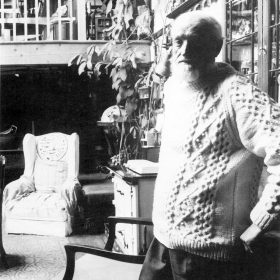In the last century or so, the modern period, Scotland has accelerated its contribution to British art through hundreds of individual artists, many of them quite resistant to the orthodoxy of art historical taxonomy. Two such are James Cowie and William Crosbie. Cowie had a cussed determination to look back to the early Renaissance and he discouraged his students from indulging in experimentation with the freedoms of modernism. But in his own work, a playfulness and intellectualism allies him, however unwittingly, with surrealism. Crosbie, a generation younger, studied in Paris with Leger and allowed the vocabulary of modernism and Picasso in particular to influence his stylistic development but like Cowie he remained a determined individual, playing with ideas of decorative and distorted imagery to his own ends. Both were highly gifted draughtsmen and seeing their work together on page and wall is no hardship and makes a link (a generalisation?) which can enrich our understanding of the Scottish School.




